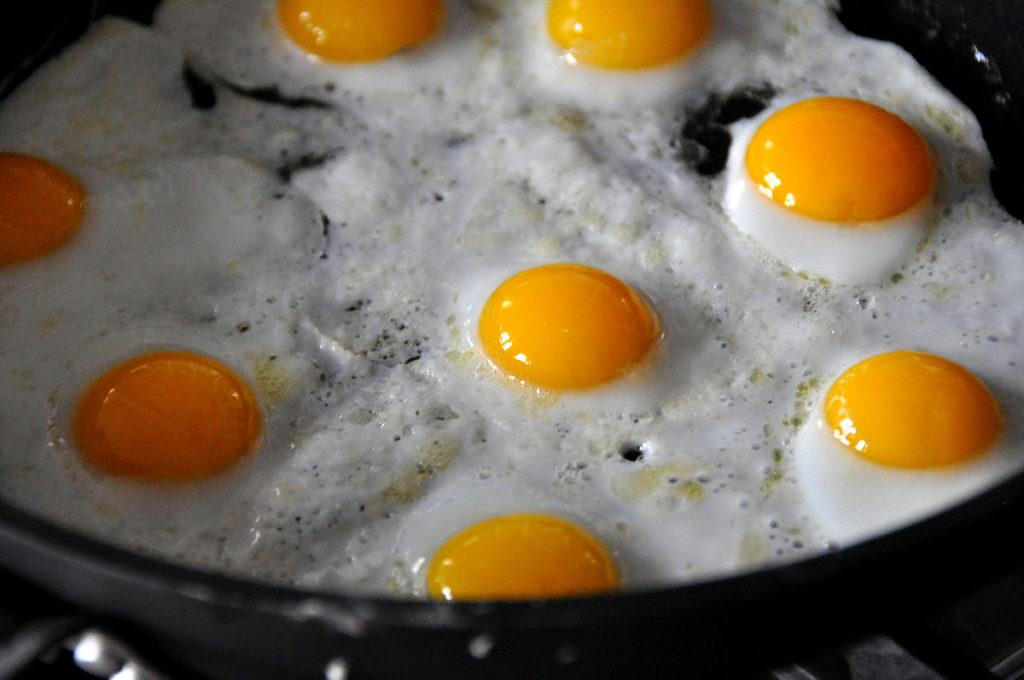
From providing aeration to fat provision, eggs perform a range of diverse jobs in our baked treats.But just how many eggs exactly does it take to make a great cake? 1…2…3…more?To help make sure your cakes are rising to the top, Saad Raja sharing with you some of his top tips on using eggs in cakes. Let’s crack on…
Eggs the question
What do eggs bring to a cake? Knowing all the functions of an egg helpful for understanding what you want. Eggs play a vital role in the characteristics of a cake, so their inclusion can affect several key factors.
- Structure: eggs provide major structure, giving a cake lightness, firmness and stability.
- Aeration: beaten eggs incorporate air, helping to make your cake taller and fluffier.
- Colour: the golden yolks give your cake the traditional soft yellow hue.
- Emulsification: emulsifiers in eggs brings fats and liquids together. This gives a smoother batter and moist cake that doesn’t feel greasy.
- Moisture: did you know eggs are 75% liquid? This can thin your batter a great deal.
- Flavour: eggs play a significant role in the taste of the cake.
- Fat provision: egg yolks are a good source of fat. This fat contributes to the tenderness and moistness of a cake.
With eggs having all these roles, it’s difficult to work out just how many you’ll need in each cake. Add in the other ingredients and it only becomes harder. Let’s move beyond the theory and look at these cake batters in action.
Batter up
Baking 5 8-inch layer cakes, we added a different number of eggs to each batter. This helped us get a feel for how egg volume variation changed the end result. Our cake layers received either 0, 1, 2,3 or 4 eggs in their batters, which made noticeable differences. Let’s look at what actually happens when the number of eggs is changed in a recipe.
- 0 eggs: A short dense and compact cake. This fell apart when cut
- 1 egg: Still rather dense and compact, but this cake did hold together when cut.
- 2 eggs: This gave a greater height and lighter texture, as well as being noticeably stronger in structure.
- 3 eggs: The best so far! Taller and lighter, with a slightly spongy texture.
- 4 eggs:For this cake, it was far too many eggs. 4 gave a sadly short, dense and rubbery finish.
When it comes to our 8-inch layer cake, 3 eggs were the clear winner. With a good height and a light texture, this cake was the closest we got to perfection. For a standard cake, we’d definitely recommend trying 3 eggs in your batter.
Need to crack a few eggs
Changing the number of eggs alters your overall result. The number you’ll need undoubtedly changes based on what type of cake you’re making and what you want from it. Try varying the number of eggs to determine what’s eggsactly right for you.








